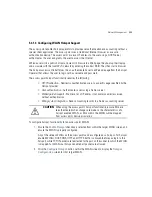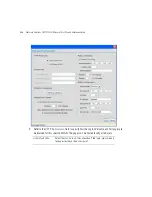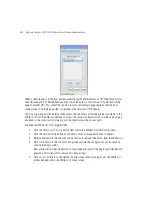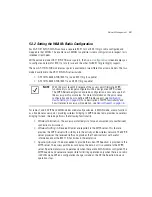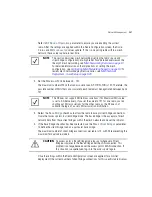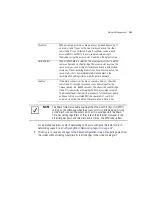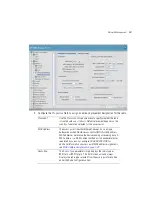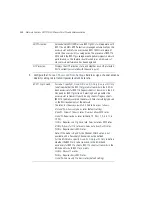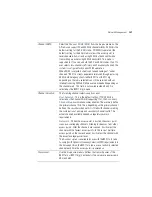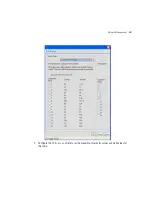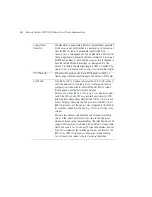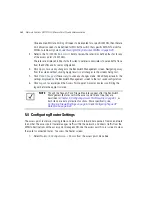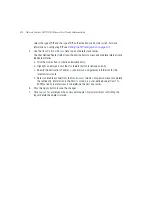
Network Management
5-59
Channel Width
Select the
Channel Width (MHz)
from the drop-down menu.
The
AP radio can support 20 and 40 MHz channel widths. 20 MHz is the
default setting for the 2.4 GHz radio. 20/40 MHz operation (the
default setting for the 5 GHz radio) allows the access point to
receive packets from clients using 20 MHz of bandwidth while
transmitting a packet using 40 MHz bandwidth. This mode is
supported for 11n users on both the 2.4 and 5 GHz radios. If an 11n
user selects two channels (a Primary and Secondary channel), the
system is configured for dynamic 20/40 operation.
When 20/40 is selected, clients can take advantage of “wider
channels.” 802.11n clients experience improved throughput using
40 MHz while legacy clients (either 802.11a or 802.11b/g
depending on the radio selected) can still be serviced without
interruption using 20 MHz. Define a value as needed depending on
the channel used. This field is not available when B and G is
selected as the 802.11 b/g/n mode.
Channel Selection
The following channel selection options exist:
User Selected
- This is the default setting. If 20/40 MHz is
selected as the Channel Width (supporting 11n), the
Secondary
Channel
drop-down menu becomes enabled. The user must define
the primary channel first. Then, depending on the primary channel
defined, the secondary channel list is filled with channels making
the combination of primary and secondary channels valid. The
actual channels available depend on regulatory domain
requirements.
Automatic
- When the access point is booted, the access point
scans non-overlapping channels listening for beacons from other
access points. After the channels are scanned, it will select the
channel with the fewest access points. In the case of multiple
access points on the same channel, it will select the channel with
the lowest average power level.
The
Random
option is available for use with the 802.11a/n radio.
To comply with
Dynamic Frequency Selection
(DFS) requirements in
the European Union, the 802.11a/n radio uses a randomly selected
channel each time the access point is powered on.
Power Level
Use the drop-down menu to defines the transmit power of the
802.11a/n or 802.11b/g/n antenna(s). The values are expressed in
dBm and mW.
Содержание P-7131N-FGR
Страница 1: ...Motorola Solutions AP 7131N FGR Product Reference Guide M ...
Страница 3: ...AP 7131N FGR Access Point Product Reference Guide ...
Страница 4: ......
Страница 14: ...Motorola Solutions AP 7131N FGR Access Point Product Reference Guide 10 ...
Страница 46: ...Motorola Solutions AP 7131N FGR Access Point Product Reference Guide 1 30 ...
Страница 57: ...Hardware Installation 2 11 ...
Страница 70: ...Motorola Solutions AP 7131N FGR Access Point Product Reference Guide 2 24 ...
Страница 90: ...Motorola Solutions AP 7131N FGR Access Point Product Reference Guide 3 20 ...
Страница 224: ...Motorola Solutions AP 7131N FGR Access Point Product Reference Guide 5 78 ...
Страница 296: ...Motorola Solutions AP 7131N FGR Access Point Product Reference Guide 6 72 ...
Страница 639: ...Configuring Mesh Networking 9 23 4 Enable base bridge functionality on the 802 11a n radio Radio 2 ...
Страница 692: ...Motorola Solutions AP 7131N FGR Access Point Product Reference Guide B 10 ...
Страница 699: ......

